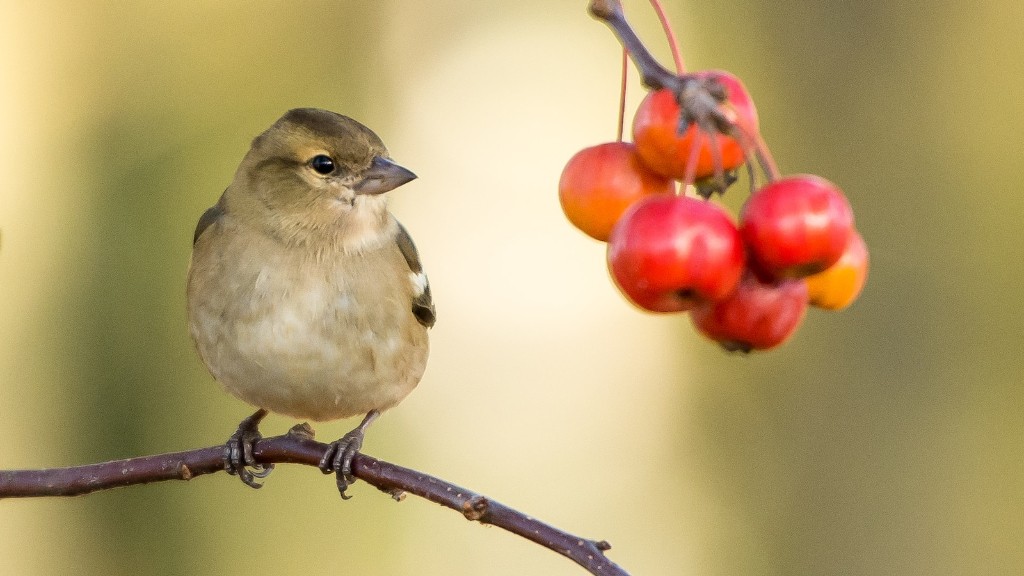Introduction to Cherry Trees
Cherry trees are a stunning addition to any landscape. Developing from a small, fragrant blossom into delicious and juicy fruit, cherry trees truly come alive each spring. The amazing variety of color, shape, and size of their blossoms is a sight to behold, it takes your breath away. But this eye-catching beauty will take some time and effort before you can enjoy their bounty. Understanding the biology, care, and when to expect the fruit of the cherry tree are key.
Life Cycle of a Cherry Tree
Cherry trees tend to grow in temperate climates and can take a few years for the tree to bear fruit. Generally speaking, a cherry tree will take up to three years to start bearing fruit, with some trees taking even longer. The exact time that it takes for a cherry tree to bear fruit will depend on the variety and how well it is cared for.
Once the cherry tree drops its petals in the spring, the process of producing new fruit begins. New fruit begins to grow and will be mature enough to eat late summer or early fall of the same year. During the early growing season, the fruits go through a period of rapid growth. This is the best time to pay special attention to the tree and provide adequate watering, nutrients, and pest control.
Types of Cherry Trees
When choosing the perfect cherry tree for your space and needs, it is important to consider the type of tree and what it requires to grow properly. There are both sweet and tart cherry trees, as well as a few hybrid varieties that produce both. Sweet cherry trees generally contain higher amounts of sugars and are usually eaten fresh or used to make jams. Tart cherry trees contain lower amounts of sugars and are primarily used for flavorings, pies, and other desserts.
Sweet cherry trees require colder temperatures to stay healthy and produce fruit. The best time to buy sweet cherry trees is mid-fall, when the temperatures are steadily dropping. Tart cherry trees, on the other hand, require milder temperatures and are best planted in late spring.
Growing Requirements
Cherry trees do not need a lot of fertilizer and should be grown in soil with a pH between 6.0 and 6.5. Also, it is important to keep the tree watered often and consistently to keep the soil evenly moist. Cherry trees should also receive around 6 hours of direct light each day.
Once the tree begins to bear fruit, it is important to thin out the fruits. The trees should only bear a heavy amount of fruit every other year, so it’s important to thin out the fruits from the tree as they grow, in order to keep the tree healthy. This is due to the fact that the tree can be overburdened with too much fruit, causing it to become unbalanced and fruit too heavy one year, and too light the next.
Providing adequate pruning is another important factor in orchards and small backyard cherry trees. Pruning can be done throughout the growth season to help the tree spread its branches and better produce fruit. Pruning can also help prevent diseases that can damage the cherry tree and can help keep the size of the tree manageable.
Harvest Time
When the trees are ready to harvest, it is important to determine when the fruit is ready to be picked. The general rule of thumb is that the cherries should be plump and juicy and a deep red or yellowish in color. Different varieties of cherries will ripe at different rates, so timing the harvest correctly is important.
The cherries can then be picked in small batches and stored in a dry and cool place. The cherries can be eaten fresh, or frozen and canned for later use.
Disease and Pest Prevention
Cherries are susceptible to a variety of pests and diseases that can damage the trees and even ruin the fruit. It is important to regularly monitor the tree and surrounding area for any signs of infestation or disease. Common pests such as aphids, caterpillars, and birds can all cause varying levels of damage to the tree and its fruit.
In order to prevent any potential problems, it is important to use organic sprays or pesticides that are specifically designed for cherry trees. If a disease is found, it is important to contact a specialist and have them diagnose and treat the tree.
Challenges of Growing a Cherry Tree
Growing a cherry tree is not a walk in the park, as there are many factors that can affect the tree’s health and fruit production. Choosing the right kind of tree, providing the proper care and maintenance, watching for diseases and pests, and determining the best time to pick the fruit are all important tasks that need to be done in order for the tree to produce an abundant harvest.
However, the rewards far outweigh the work, as there is nothing like fresh, juicy cherries to enjoy during the summer months. With proper attention and care, a cherry tree can provide years of fresh, delicious fruit for your enjoyment.
Harvesting and Storage of Cherry Fruit
When it’s time to harvest the cherries from the tree, there are a few key factors that should be taken into account. First, the cherries should be carefully picked and placed into containers. Be sure to wear gloves to keep your hands clean and germ-free. It is also important to pick up any cherries that have fallen off the tree to reduce the chances of disease.
Once the cherries are picked, it is important to store them in a cool, dry place. Some cherries can be frozen and canned for later use, while others can be enjoyed fresh. The cherries stored in the freezer should be used within six months of freezing.
Careful Considerations in Watering
Cherry trees need to be watered regularly in order to produce a large crop of cherries each season. Insufficient watering can result in the cherries developing small and misshapen, or the essential nutrients may not reach the tree in the proper amounts. Overwatering can also be an issue as it can lead to root rot, mold and mildew, and other issues with the tree.
Finding the perfect balance of water for the tree will require some trial and error, but it is essential for the health of the tree and for a successful crop. A deep soak once a week in the summer months and slightly less water during the winter should work to keep the tree in good health.
Significance of Pruning
Proper pruning is essential for any cherry tree, as it can help control its size and keep the tree healthy. Pruning your tree annually is a great way to encourage fruit production and to help keep your tree manageable.
It is also important to prune away any parts of the tree that are dead or diseased. Any branches that are diseased should be carefully pruned and disposed of away from the tree to prevent the spread of infection.
Pruning for shape and aesthetics is also important. This can be done by carefully pruning the tree and shaping it into a more aesthetically pleasing structure. This can also help your tree to get more sunlight and air circulation, which is essential for a healthy and productive tree.
Fertilizing to Boost Yield
Fertilizing your cherry tree is an important way to give your tree the nutrients it needs and to help boost the yield of fruit. When fertilizing your tree, it is important to use a fertilizer that is specifically designed for cherry trees.
It is important to carefully read the instructions on the fertilizer label and to apply it at the proper dosage. Too much fertilizer can do more harm than good, causing your tree to become unbalanced and prone to disease.
Conclusion
Growing a cherry tree from a small blossom to a lush tree that produces abundant fruit each season is an incredibly rewarding experience. It is important to understand the growing times, biology, and needs of the tree, as well as the proper ways to prune, fertilize, store, and harvest the cherries. With careful and consistent care, your cherry tree can provide you with delicious fruit for many years to come.



